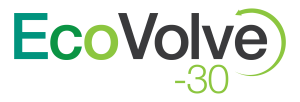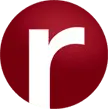Sarah:
Hi everyone. I am Sarah Carson, Rohrer’s VP of Marketing, and today I brought together two experts from our company to talk about Custom Thermoforming. We have Kerry Ulmer, she’s a Strategic Account Manager. Kerry works with brands across many industries from Health and Beauty to Home improvement. And then Dave Kats is Rohrer’s Design Manager. He and his team provide design and engineering services for all of our custom thermoforming customers. Welcome.
I will start with a question for Dave. Dave, can you tell us what’s the difference between Combo and Custom Thermoforming?
Dave:
Sure. So, combo is related to a lot of different design parameters that they work strictly within. So, there’s male-form, there’s draft angle that they are restricted to as well as material type and gauge. Custom has a more open palate more or less; so we can work with different material types, different material gauges, different draft angles. We can include undercuts and many different other design solutions that may not fit into the combo program.
Sarah:
Great. And Kerry, in your experience, when do we start exploring Custom Thermoforming options with our customers?
Kerry:
Well, a lot of it depends on the type or style of package the customer is seeking. Obviously budget plays a role in it as well. As well as the volume and we just pick a path based upon those items of criteria.
Sarah:
Dave, can you talk a bit about what’s the value in starting a project with Rohrer’s designers?
Dave:
Well, Rohrer’s designers- our design teams are significant, so we have a lot of varying levels of experience. And so when we’re in the development phase; when there’s someone who has a question or is unsure of where they want to go with a project – We can really collaborate internally to figure out what our possibilities are. And then narrow down our design to what we feel is the best, not only for the customer but how well it runs within our production equipment. So, we run it efficiently.
Sarah:
Right.
Kerry:
They’re a great resource for taking an idea and turning it into reality; and having them included definitely confirms that the design will work within our equipment like Dave had stated. So they’re a great resource.
Dave:
Yeah. And in a lot of cases, we can take a design from ideation. So really, when we don’t know exactly what the end result will be… Take it all the way from an idea to production to give the customer what they want.
Sarah:
Cool. So Kerry, could you talk a little bit about what customers can expect during the process for a Custom Thermoforming design?
Kerry:
Right. It ultimately depends on where we start. If the customer comes at us without a design, we have an internal (on-site) meeting with the customer. You know- I say internal, but nowadays it’s more on a zoom call. But we’ll get together with the marketing team and the key players with the customer and come up with some concepts for them.
If the customer has a design already, we can move right into the prototype phase. Our team will do a CAD drawing for them to approve prior to cutting a prototype mold. And then once the prototypes are approved, we go into production tooling. It really is quite fast-tracked in some cases if the design is already created by the customer.
But if we start with our team using them as a resource for concepts, there’s different phases. We’ll start with the ideation meeting and discuss the project. And we might have some changes to those concepts along the way prior to going into the prototype phase.
Sarah:
So Dave, what’s going on behind the scenes when the designers are working on a project?
Dave:
Well- like I said, a collaboration is typically happening at the front end of the project. But once we have an engineering drawing created, and we’ve supplied that to our customer, and they’ve approved it. Then we are moving ahead with actually cutting a prototype mold. So we’ll program it, we’ll cut it in a CNC machine. We’ll check the mold for accuracy prior to taking it out. And then once that mold is taken out, it’s prepped and ready for sampling. And then we take samples off of a lab press. And then we test those samples prior to sending them out to the customer. So we’re ensuring that the product fits correctly, performs correctly, before we send them out.
Sarah:
All right. Thank you. So then Kerry, one last question for you. Talk a little bit about the access that customers get to the design team.
Kerry:
I mean, they’re always available, even through the creation of the drawing. Sometimes there will be interaction with the customer and the designer just for small tweaks. They’re just there to answer any kind of questions and to give the customer assurance that it’s being designed properly, and it will fit and work with their product. Again, they’re a great resource, very knowledgeable, and I think it’s great that they collaborate amongst themselves too. So again, it’s a really great resource for our customers and sales people as well.
Sarah:
All right. Well, Dave and Kerry, thank you so much for joining the conversation today and talking a bit more about Custom Thermoforming.
To talk to member of our team about your custom thermoforming project, please click here.



